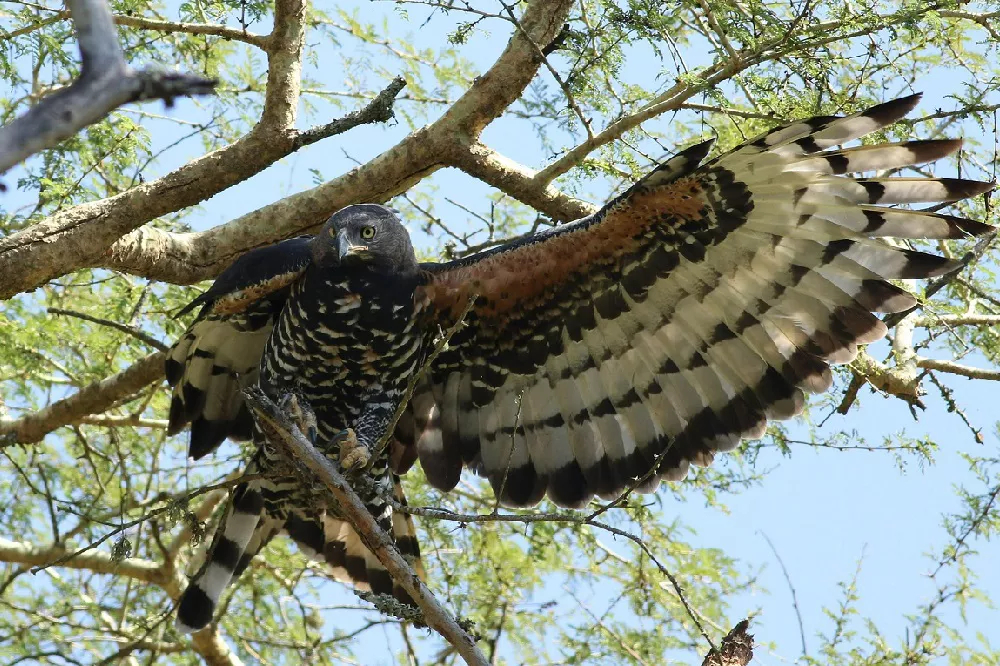The majestic birds of prey, also known as raptors, are some of the most awe-inspiring creatures in the animal kingdom. These winged predators are admired for their razor-sharp talons, powerful beaks, and impressive wingspans. From eagles to hawks, there are a variety of birds of prey that inhabit our skies. However, when it comes to size, there is one bird that stands out above the rest – the Andean condor.
The World’s biggest Bird of Prey:
The Andean condor (Vultur gryphus) is a species of New World vulture that is native to the Andes Mountains in South America. It is considered to be the biggest bird of prey in the world based on its wingspan and weight. With its striking black and white plumage and impressive aerial acrobatics, the Andean condor has captured the hearts and imaginations of people all around the world.
Physical characteristics:
The Andean condor is a massive bird, with a wingspan that can reach up to 3.3 meters (10.8 feet) and a weight that can exceed 15 kilograms (33 pounds). Its body length ranges from 100 to 130 centimeters (39 to 51 inches). The males of the species are slightly larger than the females and have a distinctive fleshy comb on the top of their heads that becomes more pronounced during breeding season.
Habitat and range:
Andean condors are found in the high-altitude regions of the Andes Mountains, from Venezuela to southern Chile and Argentina. They prefer to live in open grasslands, alpine meadows, and rocky cliffs where they can easily spot their prey. These birds typically roost in large colonies on cliff faces or in caves, often near sources of water.
Behavior and diet:
Andean condors are scavengers and feed on carrion, which they locate using their keen eyesight and sense of smell. They are known to gorge themselves on large carcasses, and their powerful beaks and neck muscles allow them to tear through tough hides and bones. These birds also have a unique social behavior – they will often gather together in groups to feed on a single carcass. This behavior is thought to help reduce competition between individuals and increase their chances of finding food.
Conservation status:
Despite being the largest bird of prey in the world, the Andean condor is listed as a vulnerable species by the International Union for Conservation of Nature (IUCN). The primary threats facing these birds include habitat loss, hunting, and poisoning from lead ammunition. In some parts of South America, Andean condors are still hunted for their body parts, which are used in traditional medicine.
The second-largest bird of prey in the world is the California condor (Gymnogyps californianus), also a type of vulture. The California condor can be found in the western United States and has a wingspan of up to 9.8 feet (3 meters) and can weigh up to 26 pounds (12 kilograms).
The third-largest bird of prey is the Eurasian black vulture (Aegypius monachus), which has a wingspan of up to 9.8 feet (3 meters) and can weigh up to 31 pounds (14 kilograms). This vulture can be found in parts of Europe, Asia, and northern Africa.
It’s important to note that there are other large birds of prey, such as the harpy eagle (Harpia harpyja) and the Philippine eagle (Pithecophaga jefferyi), but they are not as heavy as the Andean condor or the Eurasian black vulture. The harpy eagle has a wingspan of up to 7 feet (2.2 meters) and can weigh up to 20 pounds (9 kilograms), while the Philippine eagle has a wingspan of up to 7.5 feet (2.3 meters) and can weigh up to 16 pounds (7.3 kilograms).
In addition to their impressive size, birds of prey are known for their incredible hunting skills, sharp talons, and hooked beaks. They are also important to the ecosystems in which they live, helping to control populations of rodents and other small mammals.
Conclusion:
In conclusion, the Andean condor is without a doubt the largest bird of prey in the world. Its impressive wingspan and weight make it an awe-inspiring sight to behold. Unfortunately, despite its size and strength, this magnificent bird is facing numerous threats to its survival. It is important that we do what we can to protect these majestic creatures and ensure that they continue to soar above the Andes Mountains for generations to come.


 Facebook
Facebook  Instagram
Instagram  Youtube
Youtube 